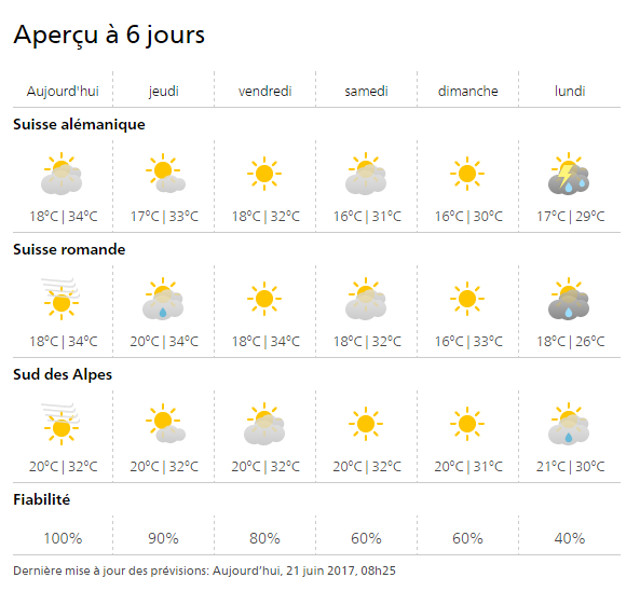
WEATHER
Heatwave puts June on course to be among hottest on record in Switzerland
As Switzerland sweats under a heatwave this week, meteorologists have said the month of June is likely to be among the second or third hottest ever recorded – though it won’t quite beat 2003’s record.
Published: 21 June 2017 08:56 CEST

People cool down in the 2015 heatwave in Lausanne. Photo: Fabrice Coffrini/AFP
Temperatures topped 30 degrees in many parts of the country on Tuesday and look set to stay that way for the rest of the week and beyond.
MeteoNews issued a heatwave alert for much of Switzerland and said the hot weather will persist until the beginning of next week at the earliest.
Temperatures up to 35 degrees are possible, especially in Basel, the Valais and Ticino.
“Given the heatwave this week, this month of June 2017 should be the second or third hottest June in Switzerland since records began more than 150 years ago,” it said.
Only June 2003 is likely to be hotter.
MeteoSuisse said the average monthly temperature across the country was around three degrees hotter than the norm.
The monthly average won’t surpass the 24 degrees of June 2003, but “there is every chance that 2017 will take second place,” it said, beating 2002 when the average was 20.5 degrees.
The European heatwave of 2003 caused the death of 70,000 people across the continent including 975 in Switzerland, seven percent more than the country's normal death rate, according to the Office of public health.
The heat is most dangerous for young children and people aged over 65.
Several cities have emergency measures in place to help elderly people suffering in the heat.
Authorities in Lausanne and Geneva pay visits to the over 75s during a heatwave and have established a helpline for those concerned.
Generally, people are advised to avoid going out in the heat during the hours of 11am to 6pm, to drink around two litres of water a day, eat cold meals and avoid physical exercise.

Source: MeteoSuisse
Url copied to clipboard!



 Please whitelist us to continue reading.
Please whitelist us to continue reading.
Member comments